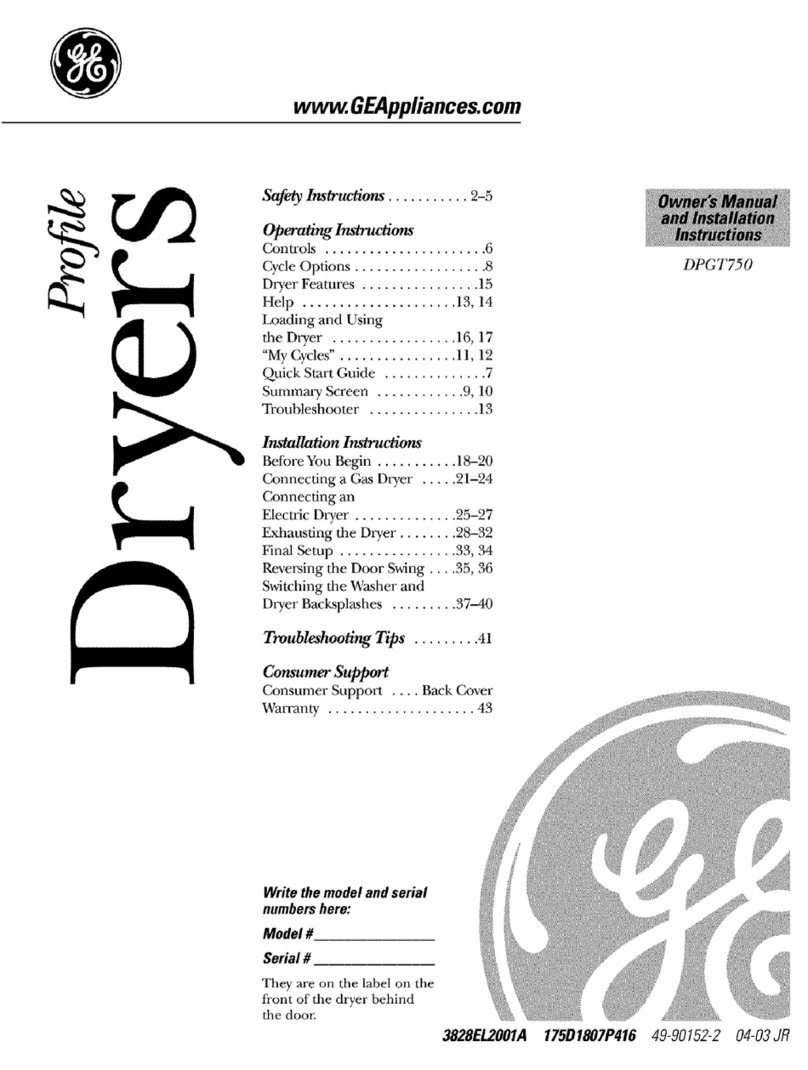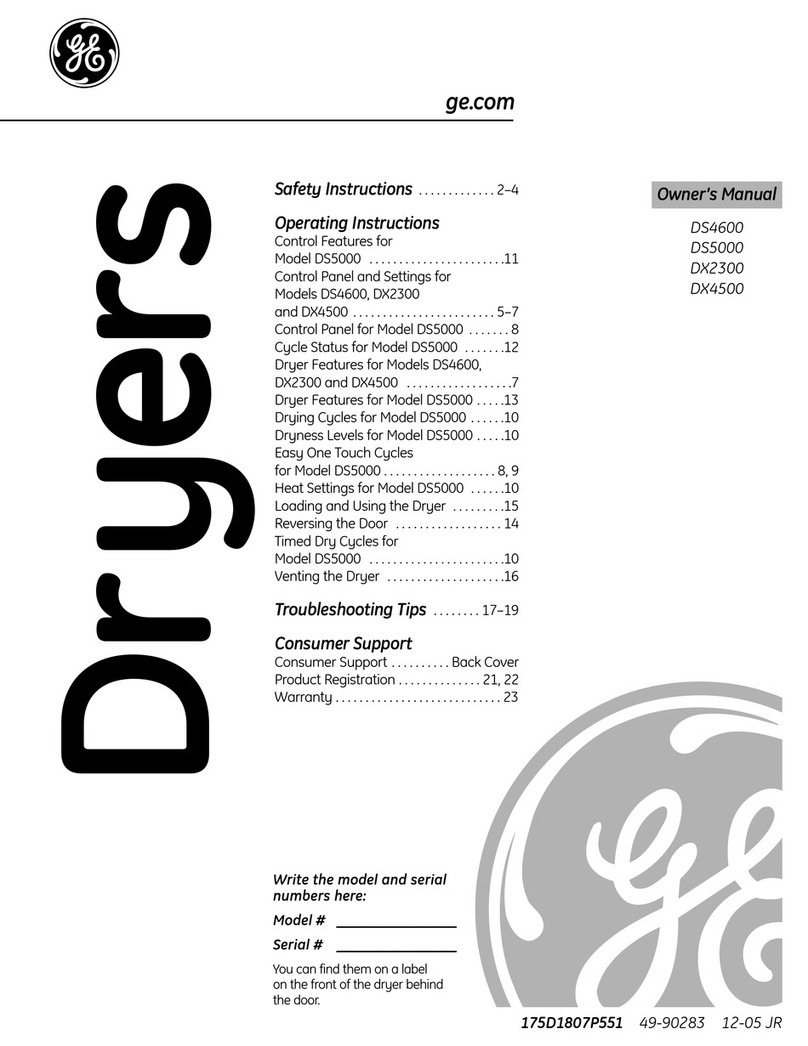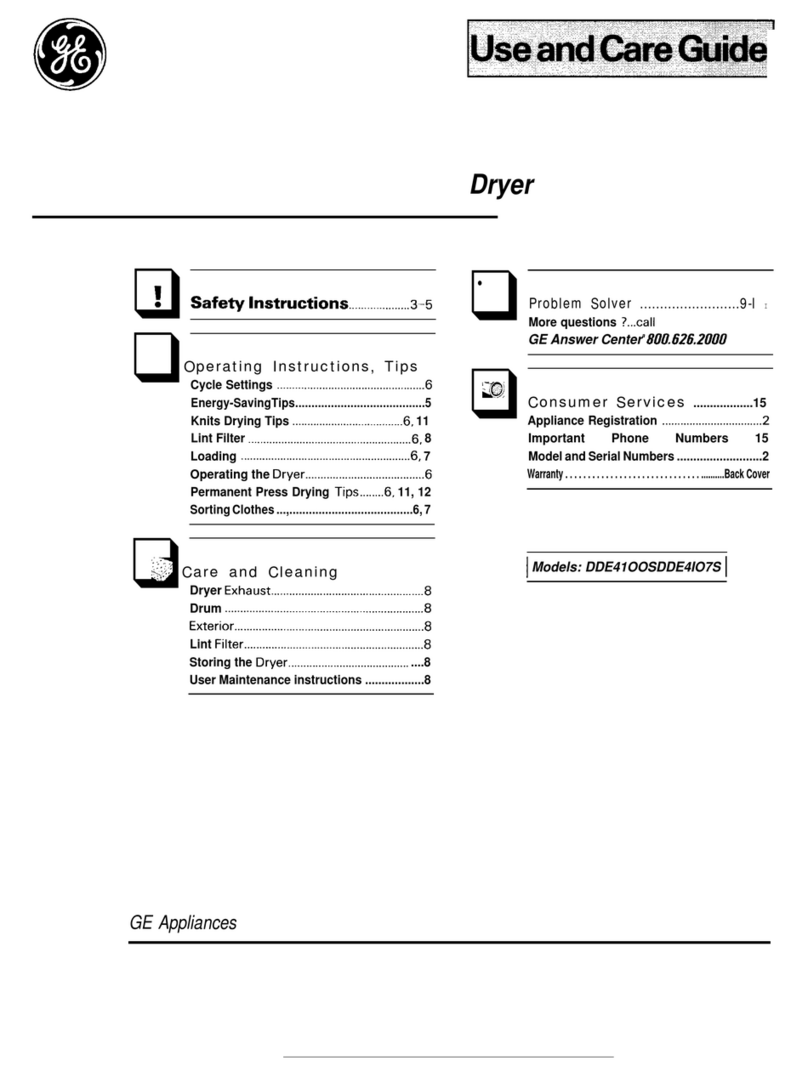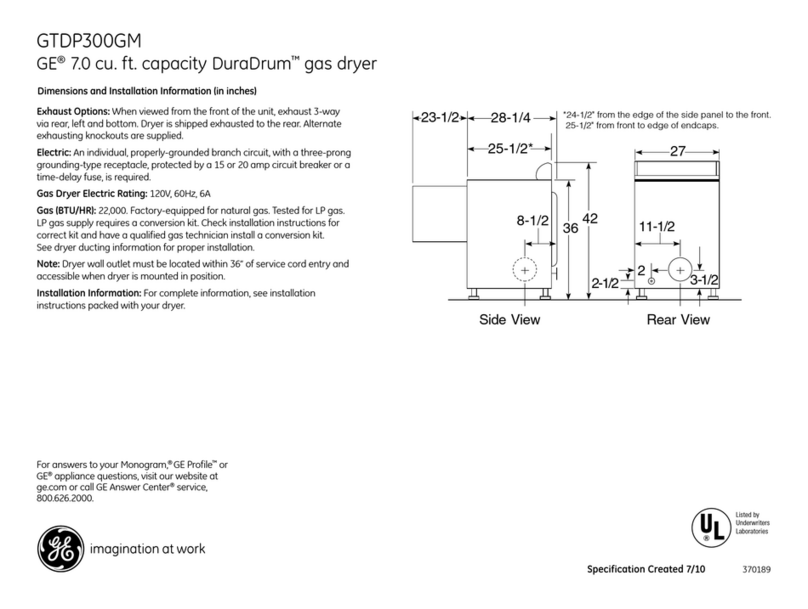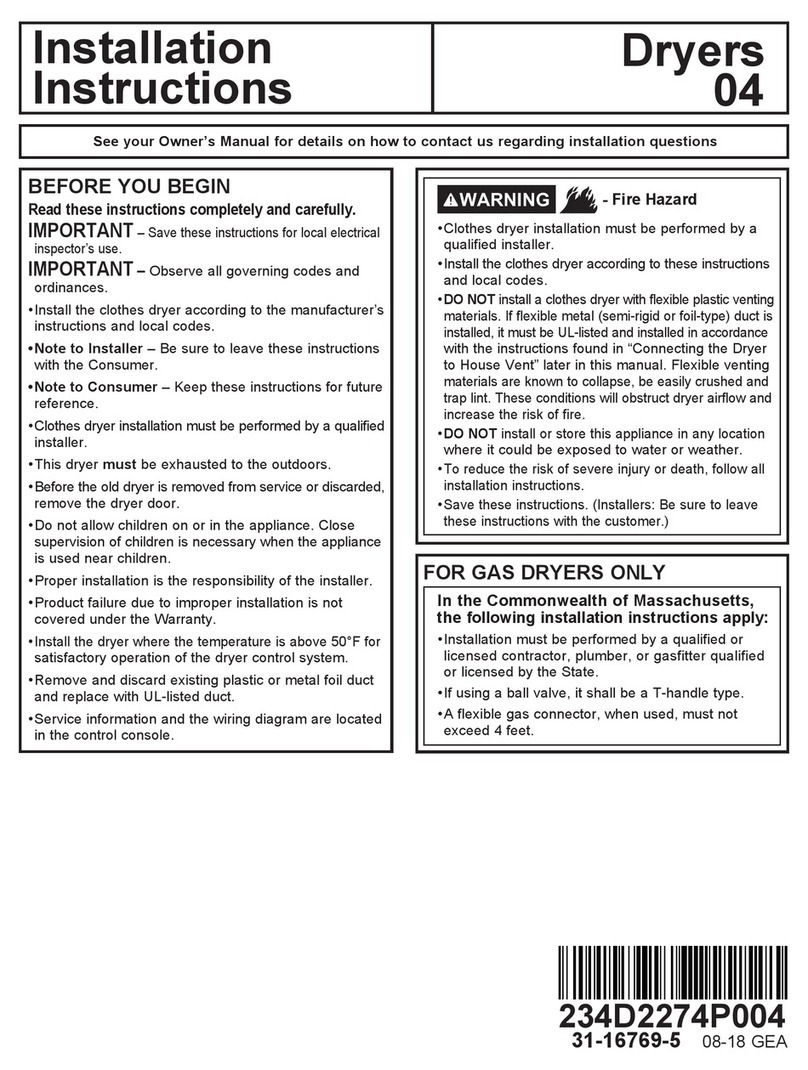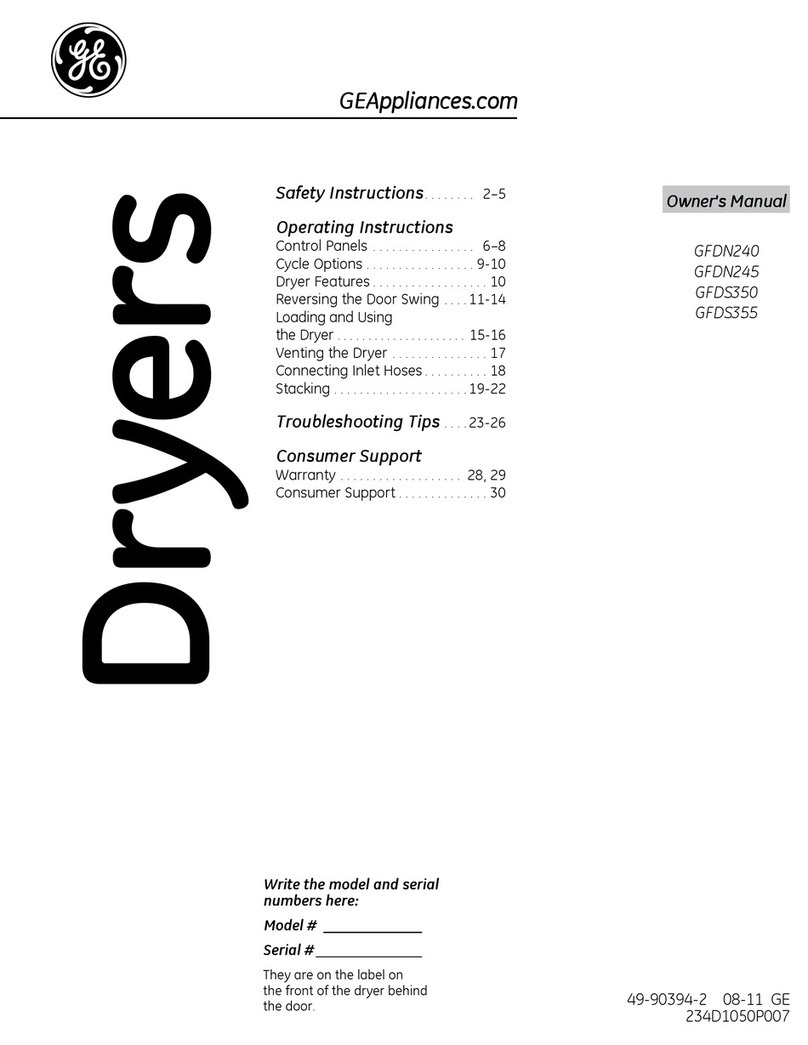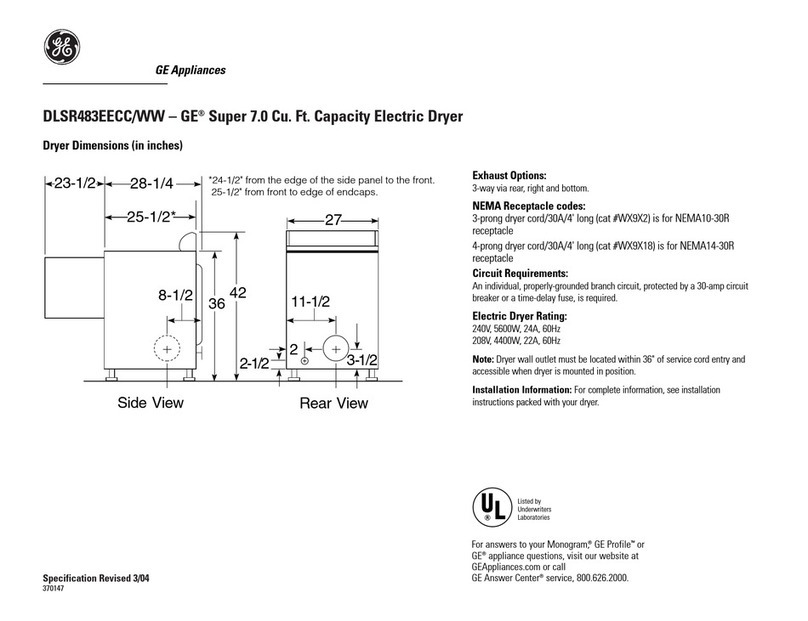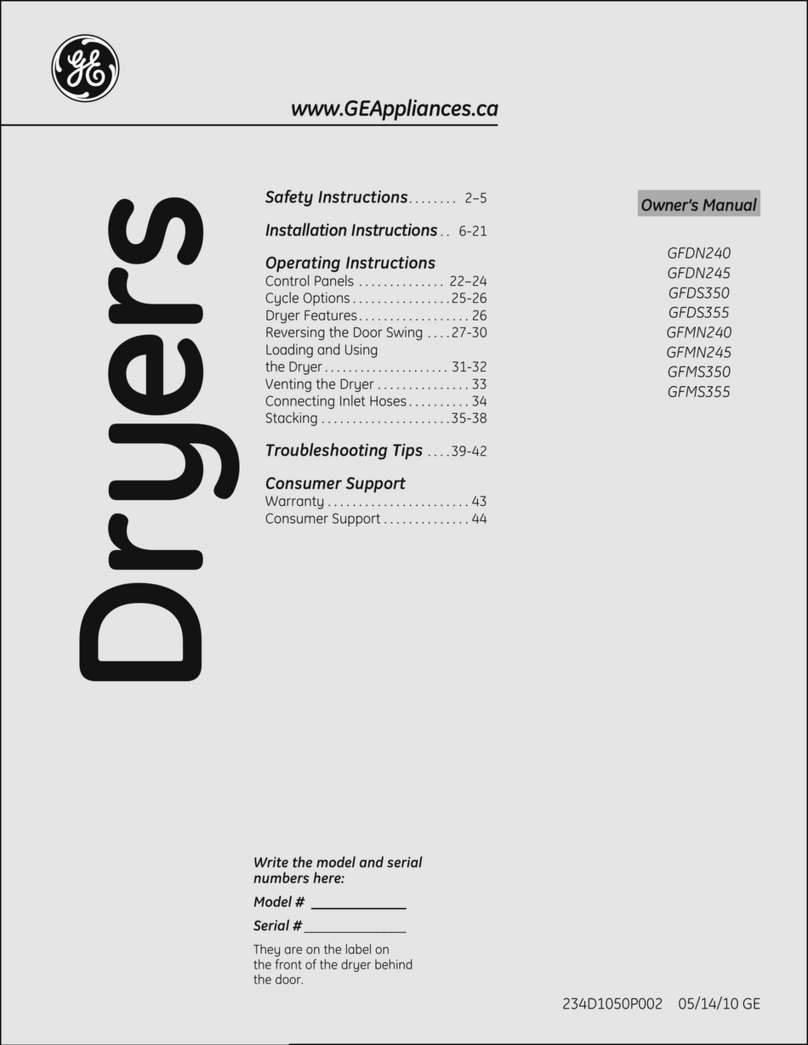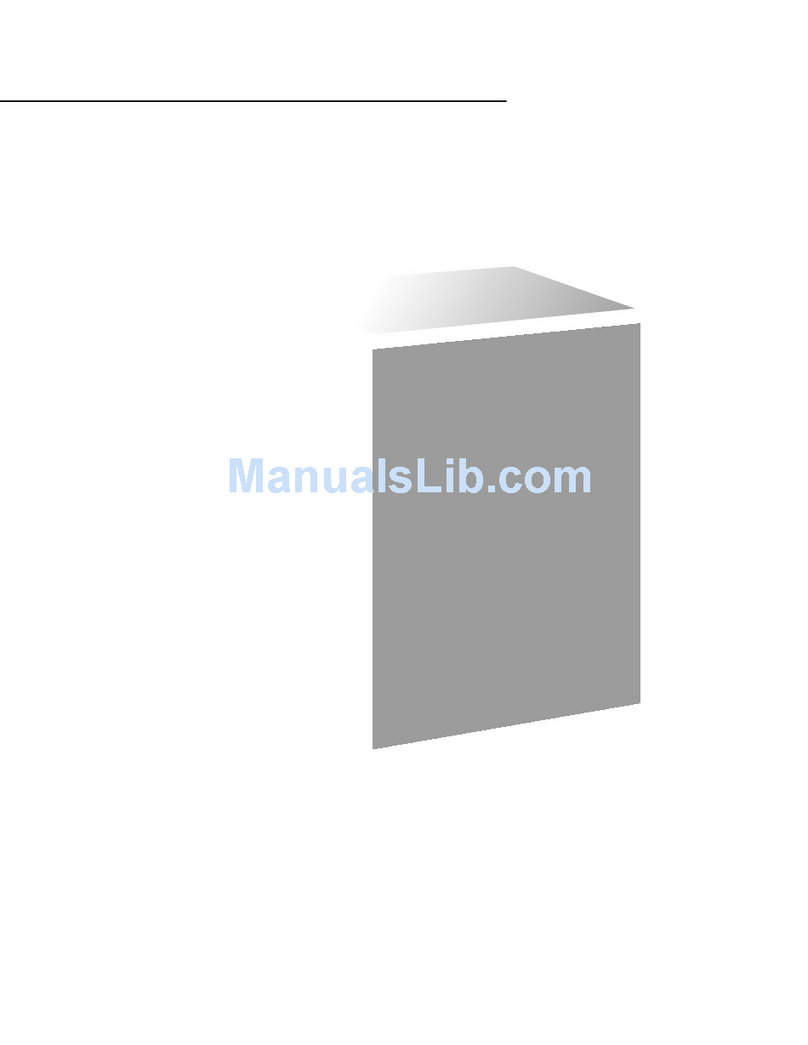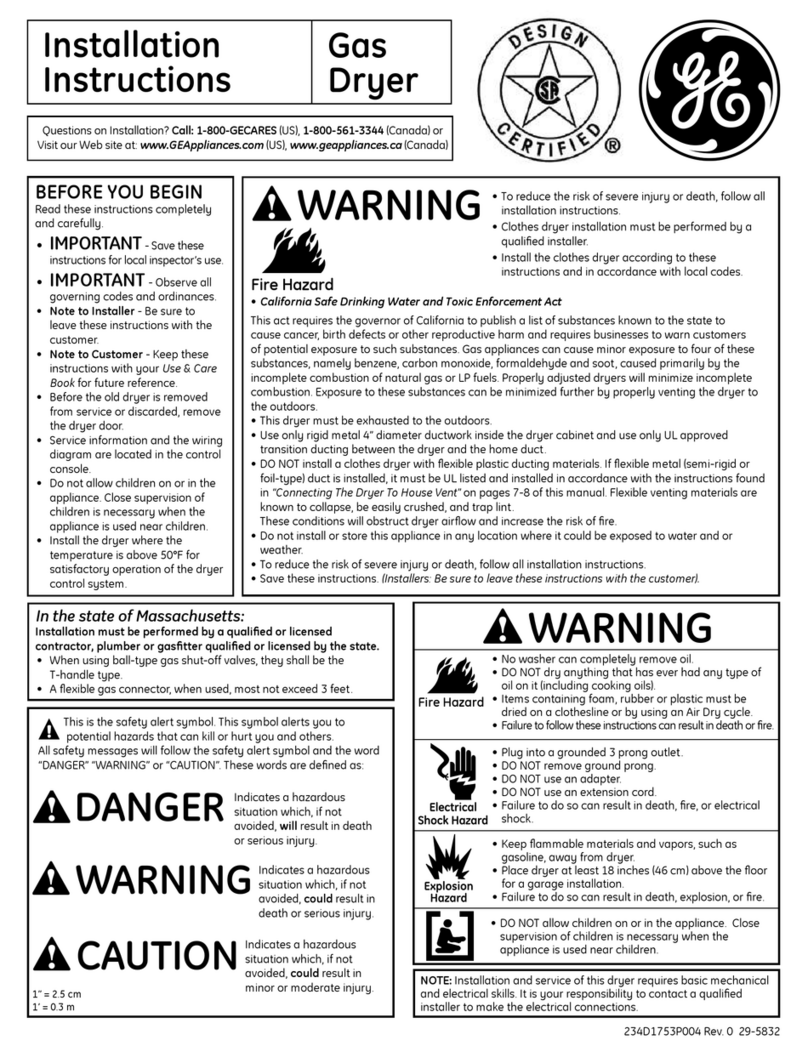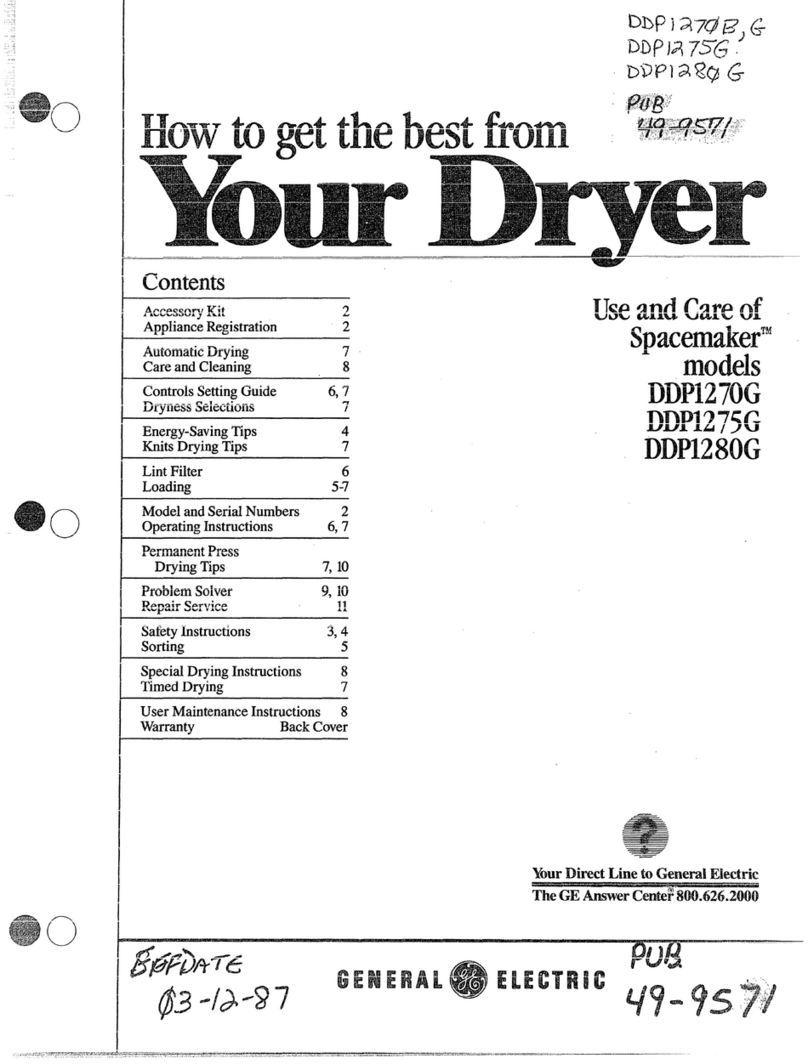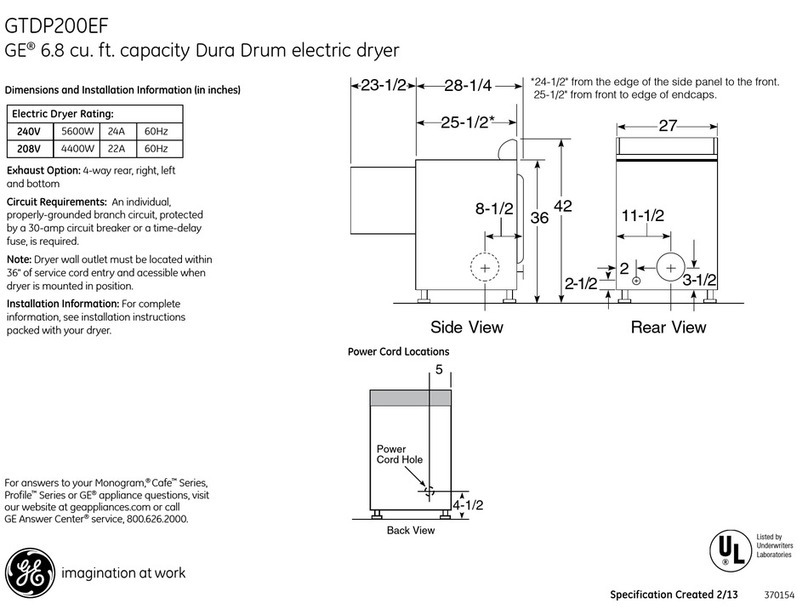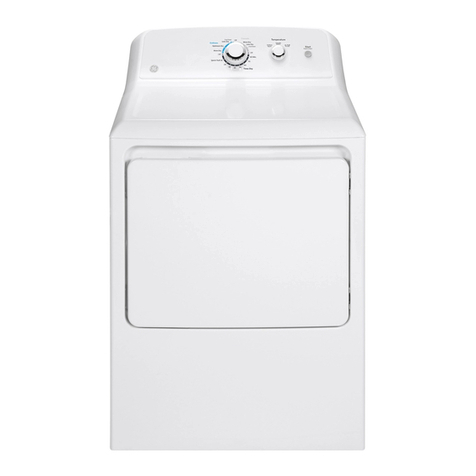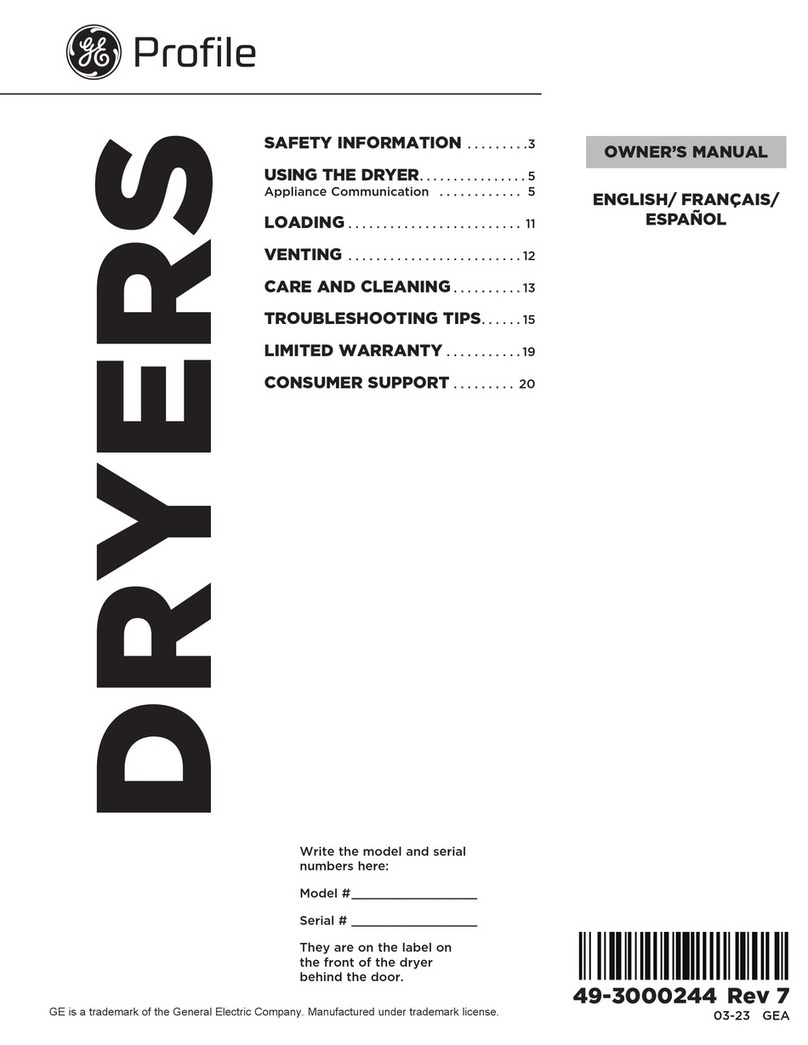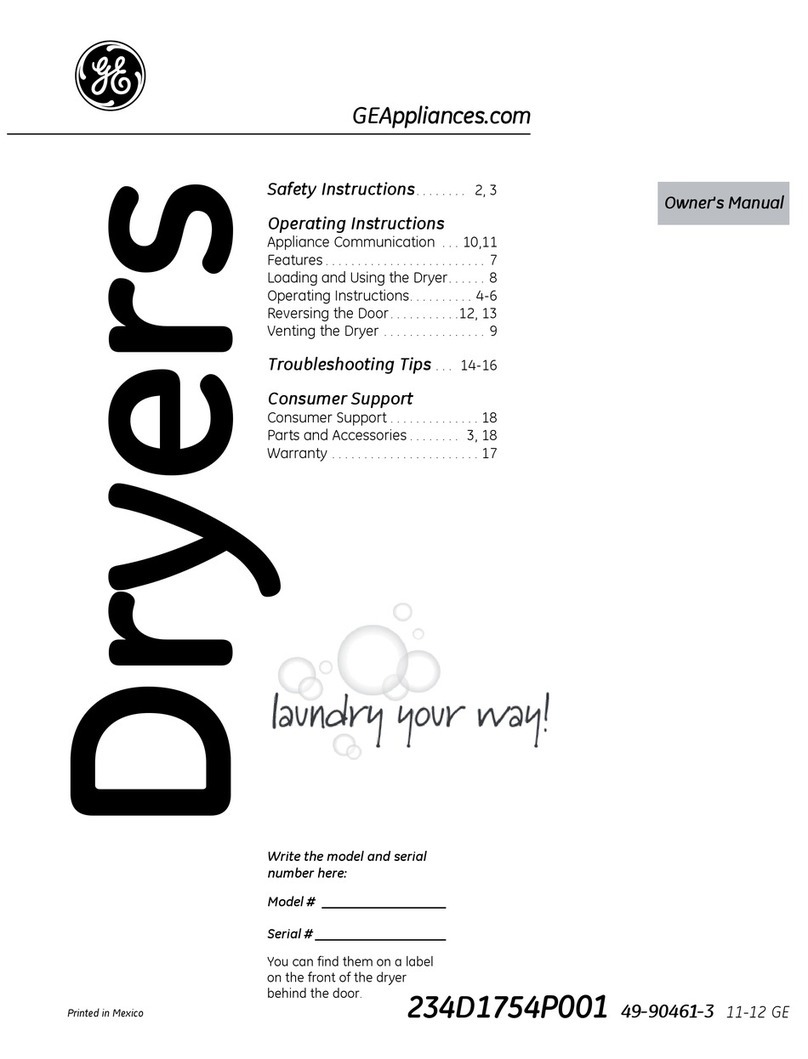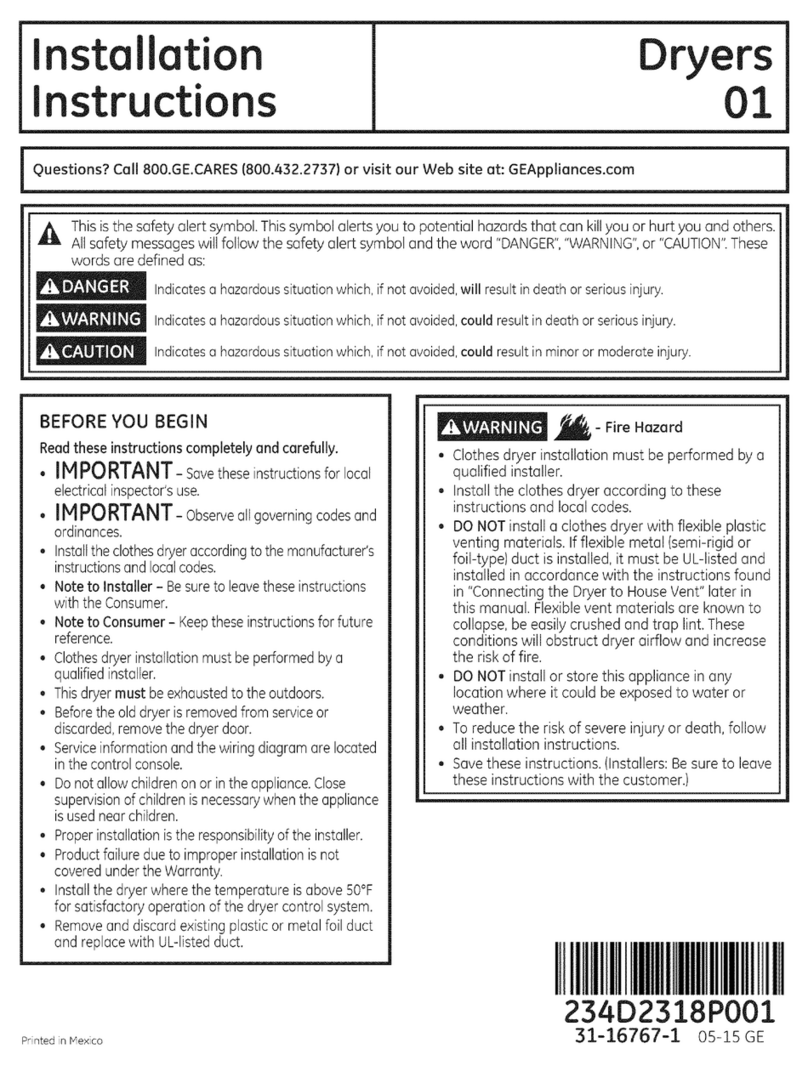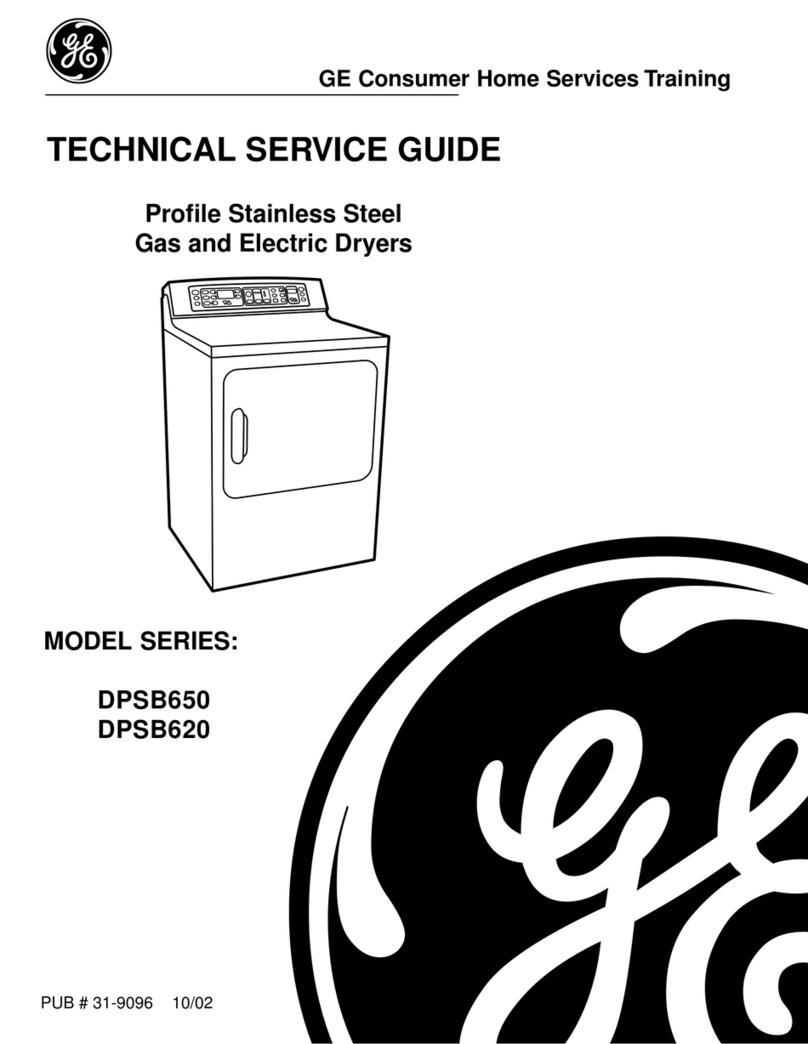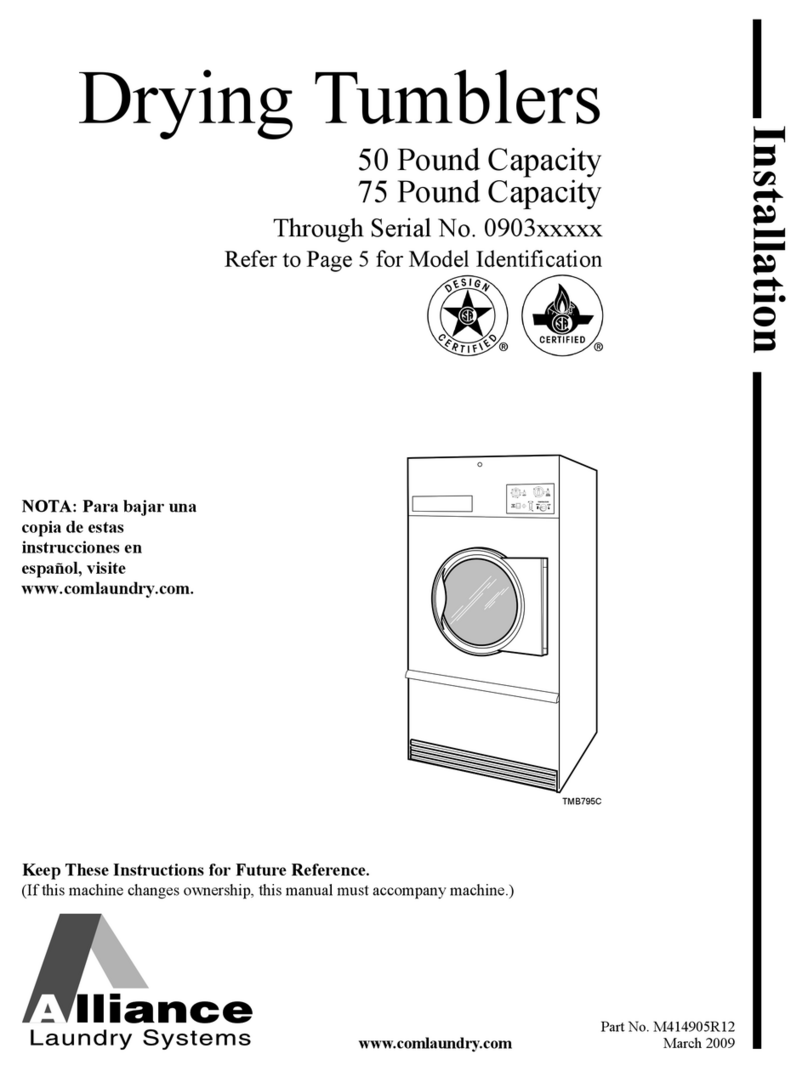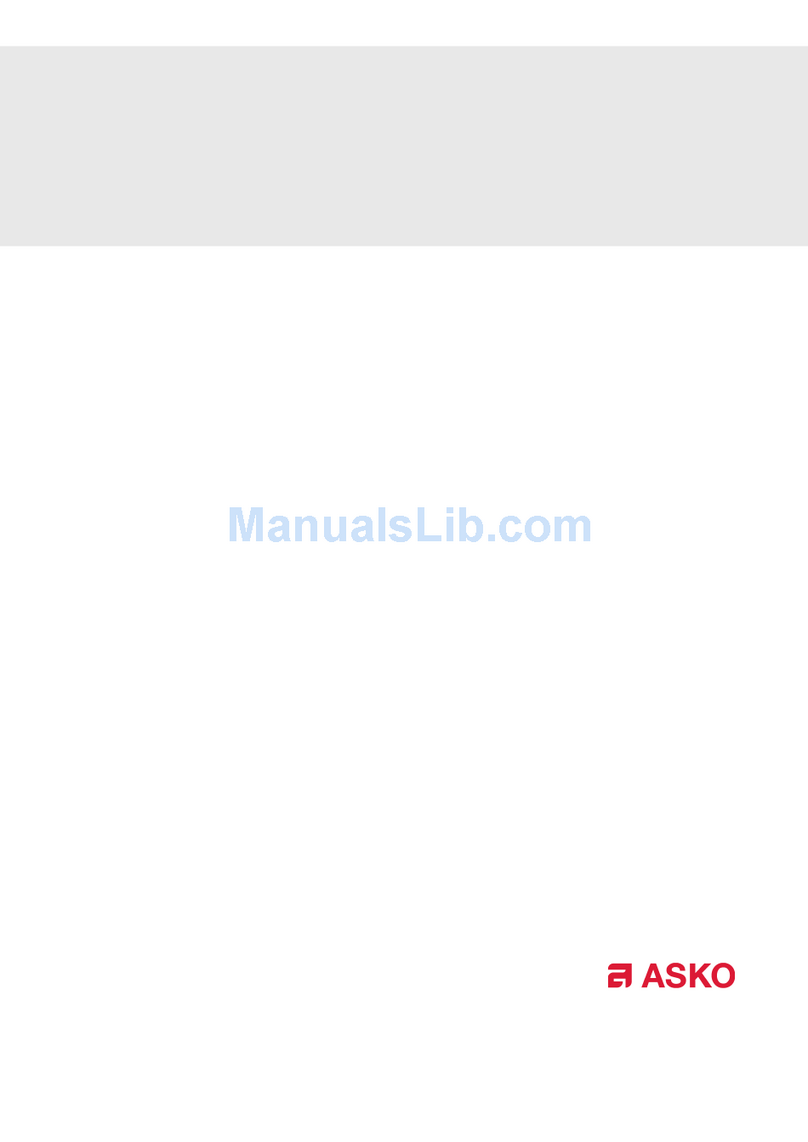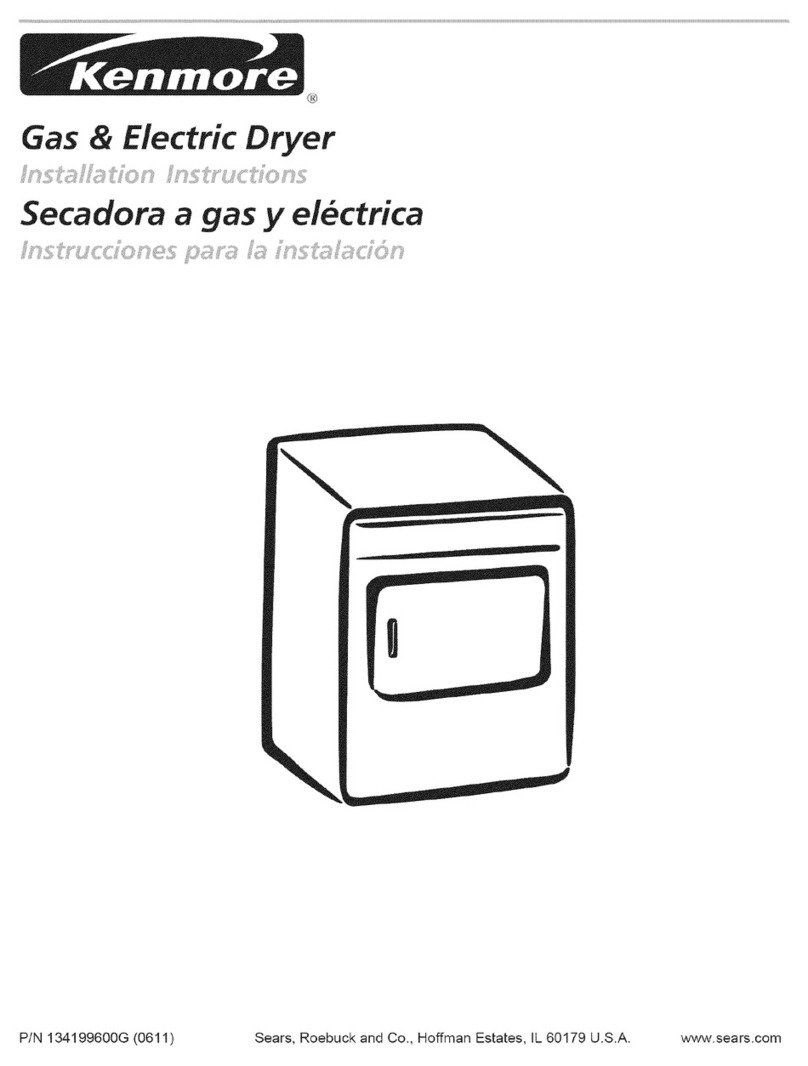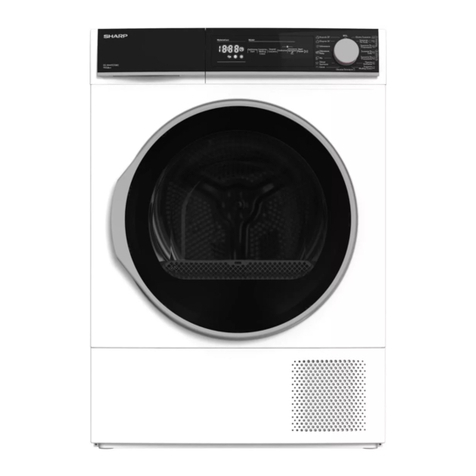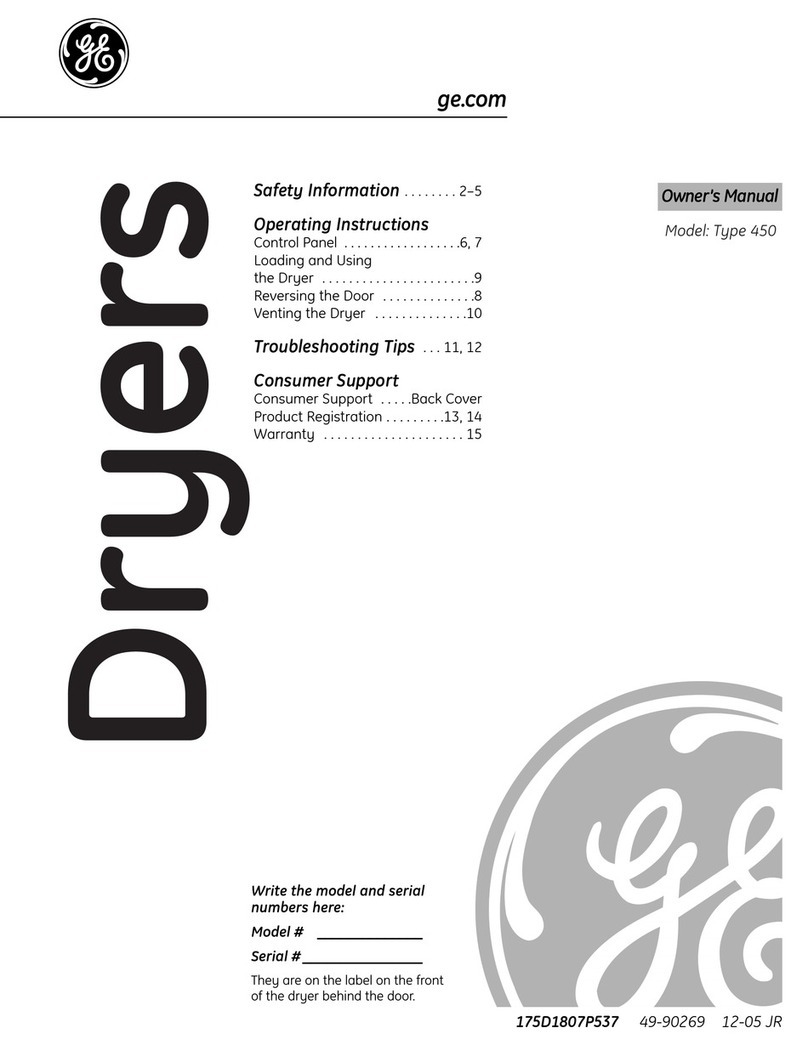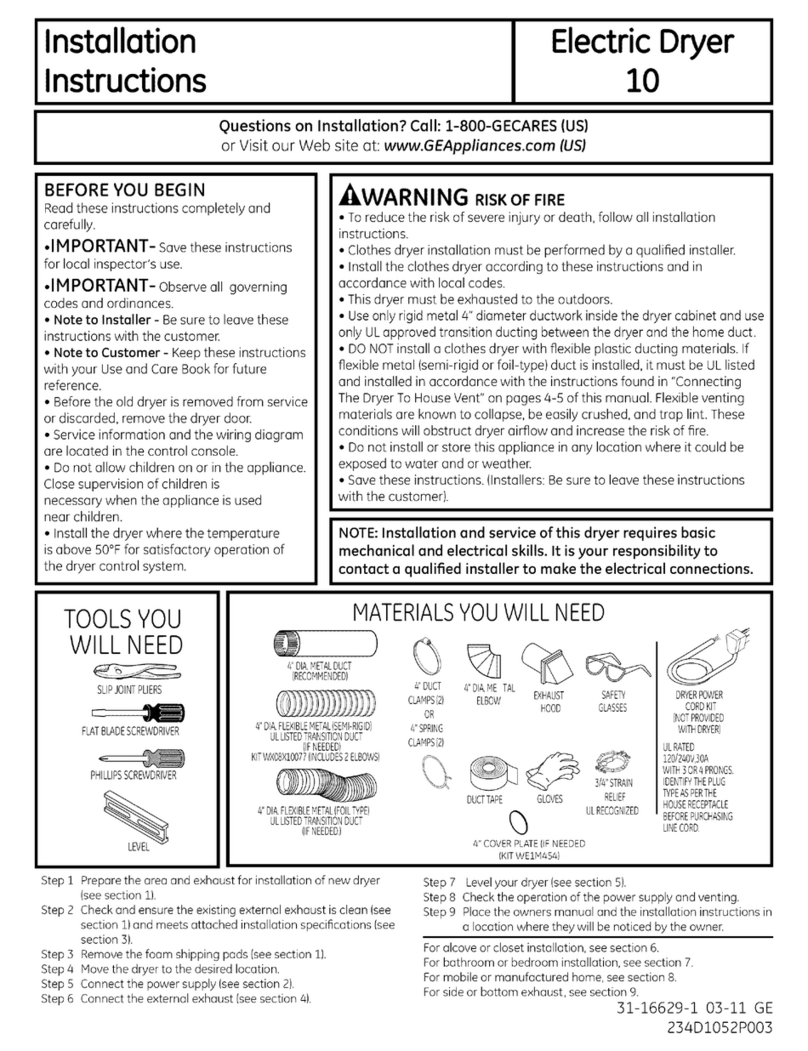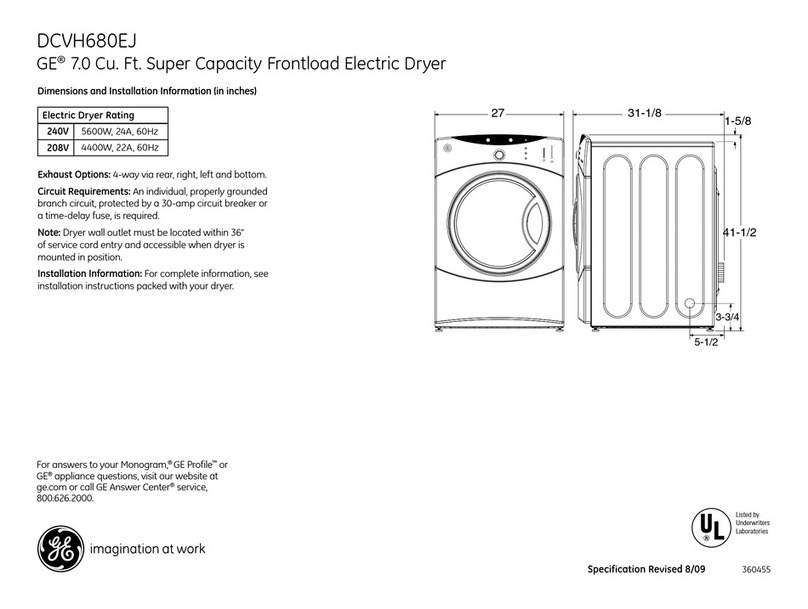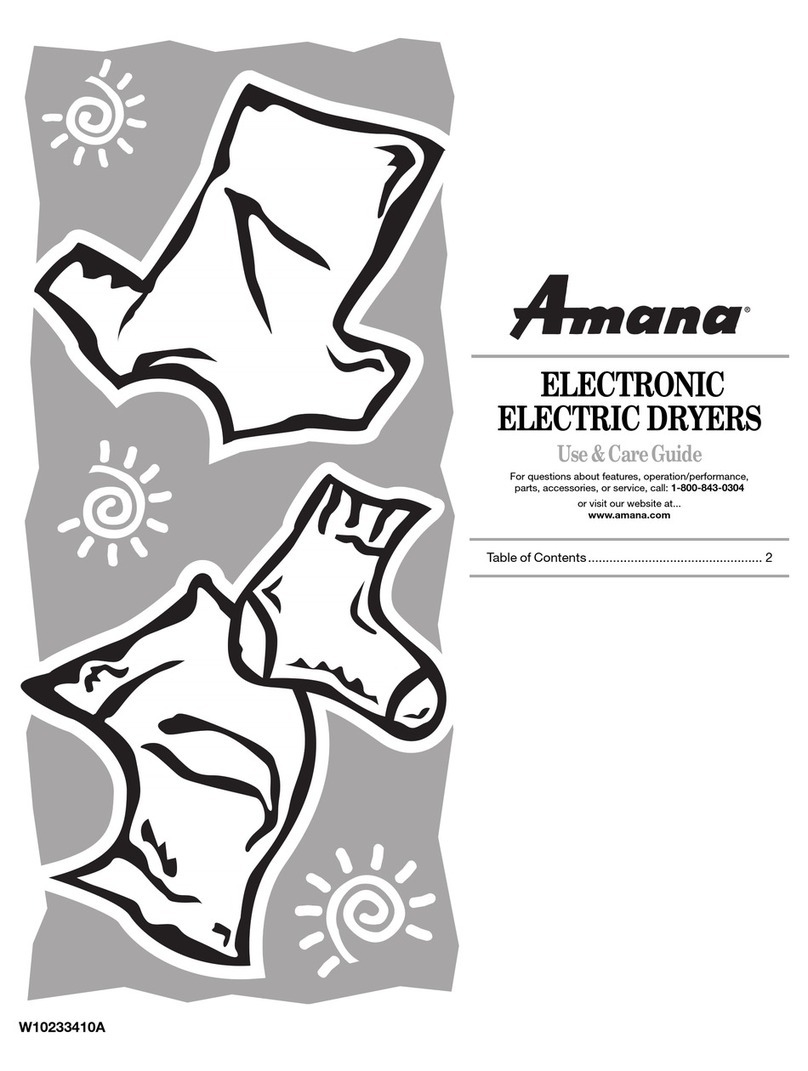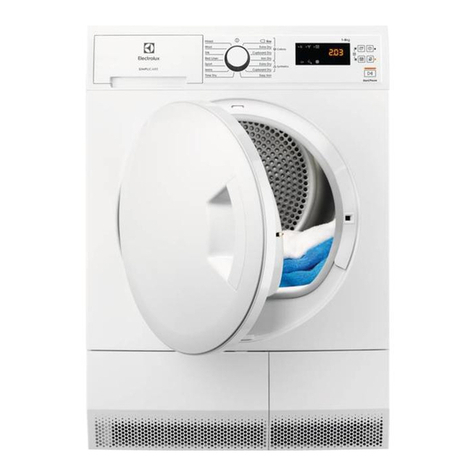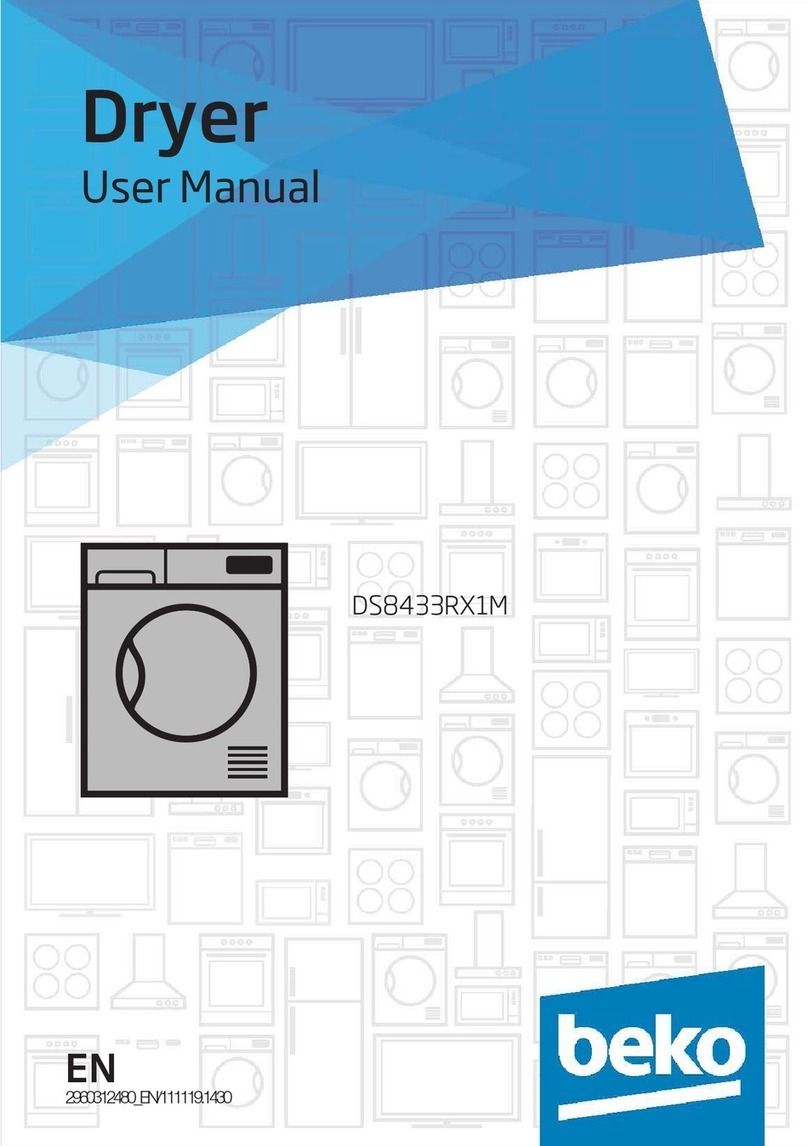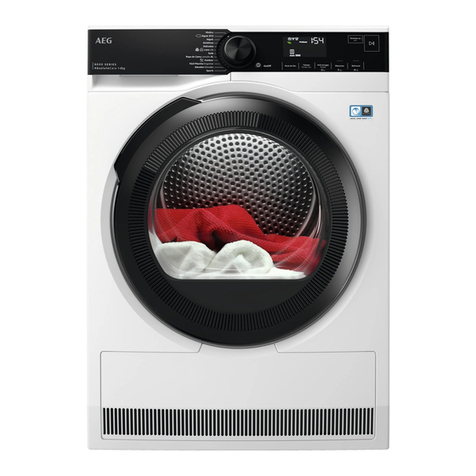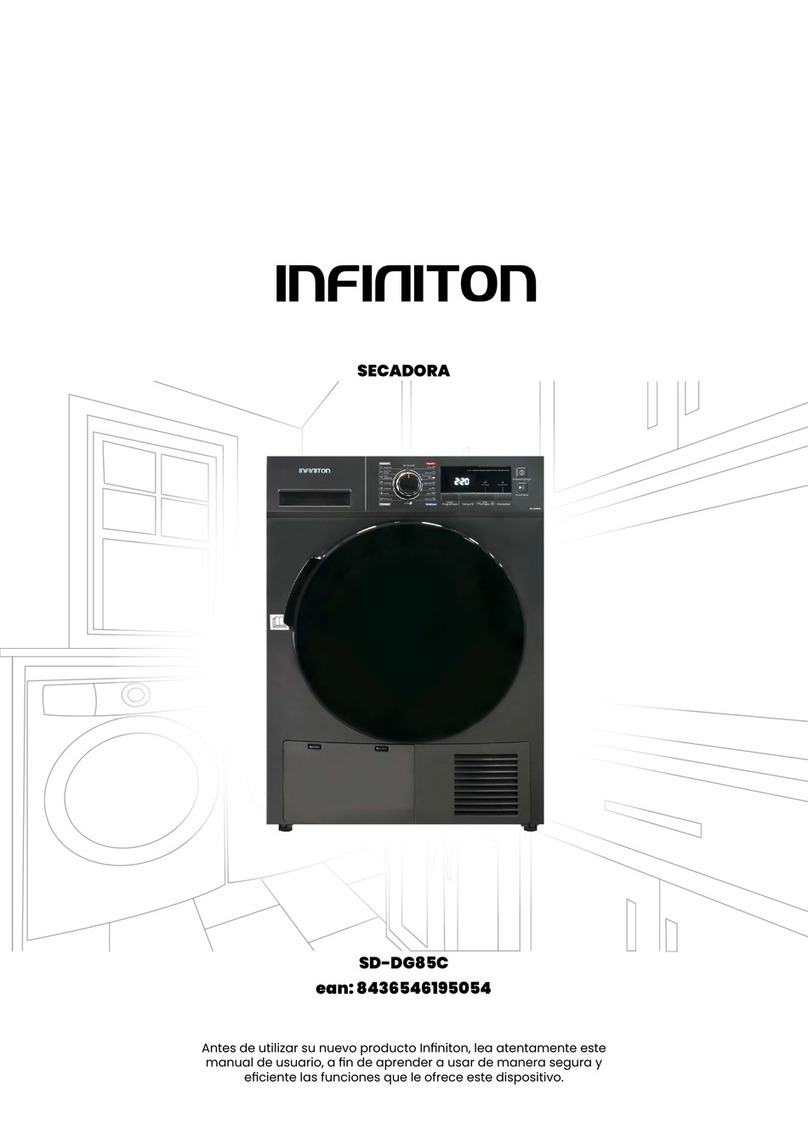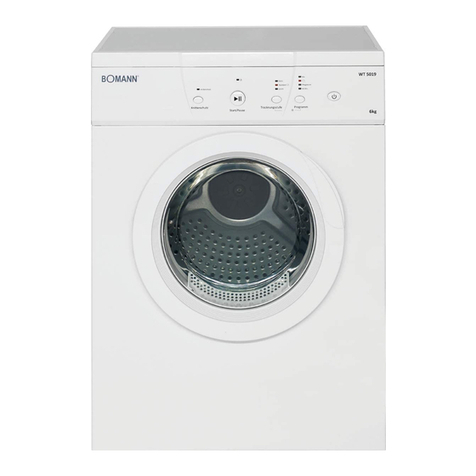“ --
—Locate where the temperature
isabove 50°F.(lO°C.)for
satisfactory operation ofthe dryer
control system. Do not install or
storethe dryerwhere itwill be
exposed totheweather.
–Connect to aproperly rated,
protected and sized power-supply
circuit to avoidelectrical overload.
—Exhausting tothe outside is
STRONGLY RECOMMENDED
toprevent largeamounts of
moisture and lint from being blown
into the room. Carefully followthe
ExhaustingDetails intheInstallation
Instructions.
.men disconnecting this
appiiance pull bythe plug rather
than the cord toavoiddamage to the
cord orjunction ofcord and plug.
Make sure that the cord islocated so
that it will not be stepped on,
tripped overor otherwise subjected
todamage or stress.
**-- oDo not repair or replace any
~part of the appiiance or attempt
any servicing unless specflcaily
recommended in this Use and
CareBook or in published user-
repair instructions that you
undemtand and havethe skilis to
carry out.
Tominimix the possibility
ofafirehazard.
●~not~h-t todry~cl~
containing rubber, plasti~ or
simkrmaterhds (SUCilaspadded
b- tennis shoes, galoshes, bath
-w%b*mP@%-
-etc.) asthesematerhdsmay
melt or burn. Also, some rubber
~b--mder
certain circumstances produce
f~by spontaneous combustion.
●Garments labeled “Dry AW
FromHeat”(such asiitbjacicets
containing Kapok) must notbe put
inyour dryer.
k
..- ..-... ..——...._..__.. —-.
●DO notwashor dry articles
thathavebeen cleaned in, washed
in, soaked in, orspotted with
combustibleorexpiosivesubstances
(such aswax, paint, gasoline,
degreasers, dry-cieaning solvents,
kerosene, etc.) which mayignite
or explode. Do notuse orstore
such substances on/or around
your washerand/or dryerduring
operation.
●Any article on which youhave
used acleaning solvent, or which
contains flammable materials
(such ascleaning cloths, mops,
towelsused in beauty salons,
restaurants or barbershops, etc.)
must not beplaced inor near the
dryer until alltraces ofthese
flammable liquids or solids and
their fumes havebeen removed.
There aremanyhighly flammable
items used in homes such as:
acetone, denatured alcohol,
gasoline, kerosene, some household
cleaners, some spot removers,
turpentines, waxes,waxremovers
and products containing petroleum
distillates.
.cl-n the ~t fiiter ~fom ~ch
load topreventiint accumulation
inside the dryerorin the room.
Do IN(YrOPERATETHE
DRYERWITHOUT THE LINT
FIIXERINPLACE.
●~p areaaround and
underneath yourappliance free
fmm the accumulation of
combustible materials, such as
lint, paper,rags, chemicals, etc.
●DO notstoreitemsthatmaybum
ormelt (such as clothing, paper
material, plastics or plastic
containers, etc.) on top ofthe dryer
during O~EitiO1l.
.me ~te~or Of&e ~~e
and the exhaust duct connection .
Mdethedryersliould beckankd
periodically byaqualified
individual.
●❞❞ dud (~ Wation
instructions). Useonly metal duct
inside dryeror forexhausting
dryertothe outside.
3
Tominimize the possibility
of iqjury.
●Never reach into the dryer while
the drum is moving.Beforeloading,
unloading or adding clothes, wait
until the drum has completely
stopped.
●Close supervision is necessary
if this appiiance is used by or near
children. Do not ailow children to
play inside, on or with this
appiiance or any discarded
appliance. Dispose of discarded
appliances and shippingor packing
materiais properiy. Before
discarding adryer, or removing
from service, removethe door of
the drying compartment.
●Keep ail laundry aids (such
as detergents, bleaches, fabric
softeners, etc.) out of the reach of
children, preferably in alocked
cabinet. Observe all warnings on
container labels to avoidpersonal
injury.
●Keep the floor around your
appliances clean and dry to reduce
the possibility of slipping.
●Do not dry fiberglass articles in
your dryer. Skin irritation could
resuit from the remaining glass
particles that may be picked up
by clothing during subsequent
dryer uses.
.me la~d~ ~~ess ~~~ce
theflame re&&ncyof M3rics. lb *.
avoid such aresuit, the garment ~
rnanuiiwturer’s care instructions ~;-
●To mkimize thqpossibility s~;
ofekxt& ‘tiyk, UX@UfJi$is+.~ ~.~~;I
8@kUkCdfK$tith6$Ck& S@
&cfore attfynpting my Iw@mq+&;&j
i
or ck&&g @k&f#tM &&5w!n&$’@
darling &the tit fikef). NOTE: ‘:;f
‘Ihrningthe C@e SActor knob
to anOFF position does N(YI’ .
discomect the appiiance I%Om
the power supply.
-
